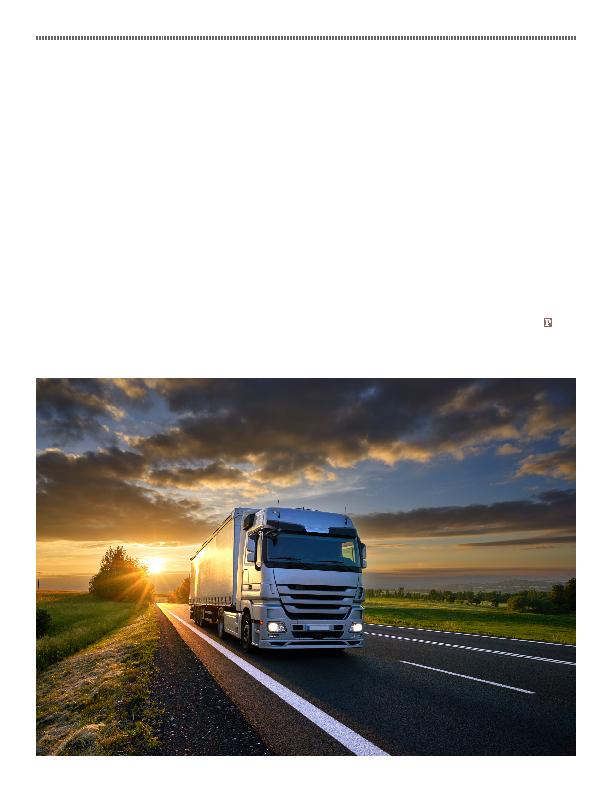
environment. Currently, autonomous trucks
are operating in mines and farms on private
sites, and the United States military uses
autonomous trucks in its tactical vehicles
on private sites.
Since the trucking industry in this
country is massive and the United States
economy is tremendously dependent upon
it, we are seeing steady advances in the
adoption of autonomous truck technology,
and it is clear that, although the roles of
truck drivers may shift, human involvement
remains an essential component to success.
Unfortunately, inconsistent regulatory and
legislative response presents a roadblock.
Presently, state and local governments
have defined roles in safeguarding the
safety and promoting the mobility of
vehicle operators in their jurisdictions.
Those roles include enacting and enforcing
traffic laws, vehicle registration and
inspection laws, insurance and liability
building and management of roadway
infrastructure. Each year, the number
of states considering legislation related
to autonomous vehicles has gradually
increased. Presently, autonomous vehicles
are legally regulated at the state level
only. As of October 2018, according
to the National Conference of State
Legislatures, 29 states and Washington
D.C. have passed laws pertaining to
autonomous vehicles more broadly. These
states are taking divergent legislative
approaches when it comes to enacting
laws related to the testing and operation
of autonomous vehicles. In enacting these
laws, it is incumbent upon state and local
governments to consider amendments to
existing traffic laws and regulations that
may be barriers to the use of automated
vehicles within their jurisdiction. For
instance, several states have following
distance laws and those laws will prevent
trucks from participating in the automated
truck platooning concept discussed above.
Highway Traffic Safety Administration
provides recommendations, not regulations.
The most notable breakthrough in
autonomous vehicle legislation is the Self
Drive Act, which passed in September
2017. The Act provides a federal safety
framework to support self-driving
innovation and technology; however,
the Act excludes commercial trucks.
Thereafter, the Senate introduced the AV
Start Act, a similar bill, but that bill was
stalled due to concerns raised by organized
labor unions about workplace safety
and job losses. Thus, despite what many
investors and analysts view as potentially
lifesaving and profitable technology,
the trucking industry is left with a
patchwork of inconsistent regulations
and recommendations that renders it
impossible to operate a truck with this
technology on interstate freeways.